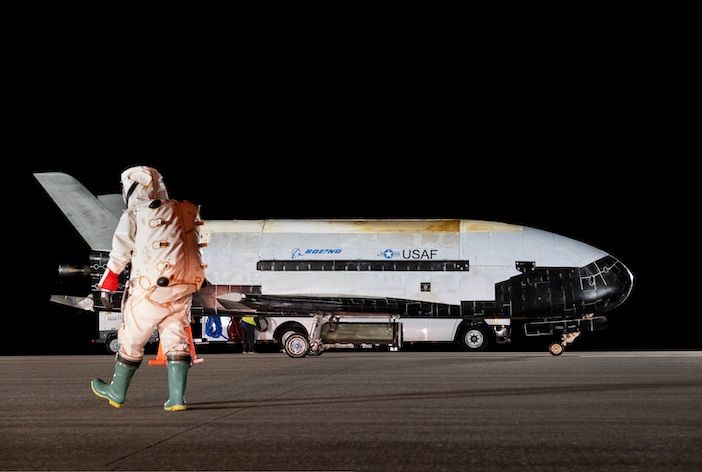The X-37B Orbital Test Vehicle set a new endurance record after spending 908 days on orbit before landing at NASA’s Kennedy Space Center in Florida last week.
The 908 days on-orbit far surpasses its previous record of 780 days, which was established by the robotic spaceplane between 2017 and 2019. The X-37B Orbital Test Vehicle’s (OTV) hosts experiments for the US Government and industry.
The 30ft-long spacecraft is built by Boeing and made its first orbital mission in 2010.
The reusable spaceplane has now flown over 1.3 billion miles and spent a total of 3,774 days in space.
The X-37B inherited its aerodynamic design from the USA’s iconic Space Shuttle and was originally conceived to be launched from the cargo bay of that spacecraft. However, after Space Shuttle missions were stopped in 2011 X-37B was redesigned so it could be launched from rockets such as the Delta IV.
The X-37B’s sixth mission saw it carry a service module for the first time to augment the number of payloads it can haul. The module separated from the OTV prior to de-orbiting to land.
Gen. Chance Saltzman, chief of space operations for the US Space Force said, “This mission highlights the Space Force’s focus on collaboration in space exploration and expanding low-cost access to space for our partners, within and outside of the Department of the Air Force.”
Experiments on the mission, the OTV’s sixth, included a solar energy test designed by the Naval Research Lab and multiple NASA experiments including the Materials Exposure and Technology Innovation in Space (METIS-2), which evaluated the effects of space exposure on various materials to validate and improve the precision of space environment models.
Mission 6 also hosted a NASA experiment to evaluate the effects of long-duration space exposure on seeds that aims to inform research for future interplanetary missions and the establishment of permanent bases in space.

Jim Chilton, senior vice president of Boeing Space and Launch said, “Since the X-37B’s first launch it has shattered records and provided an unrivaled capability to rapidly test and integrate new space technologies.
“With the service module added, this was the most we’ve ever carried to orbit on the X-37B and we’re proud to have been able to prove out this new and flexible capability for the government and its industry partners.”





